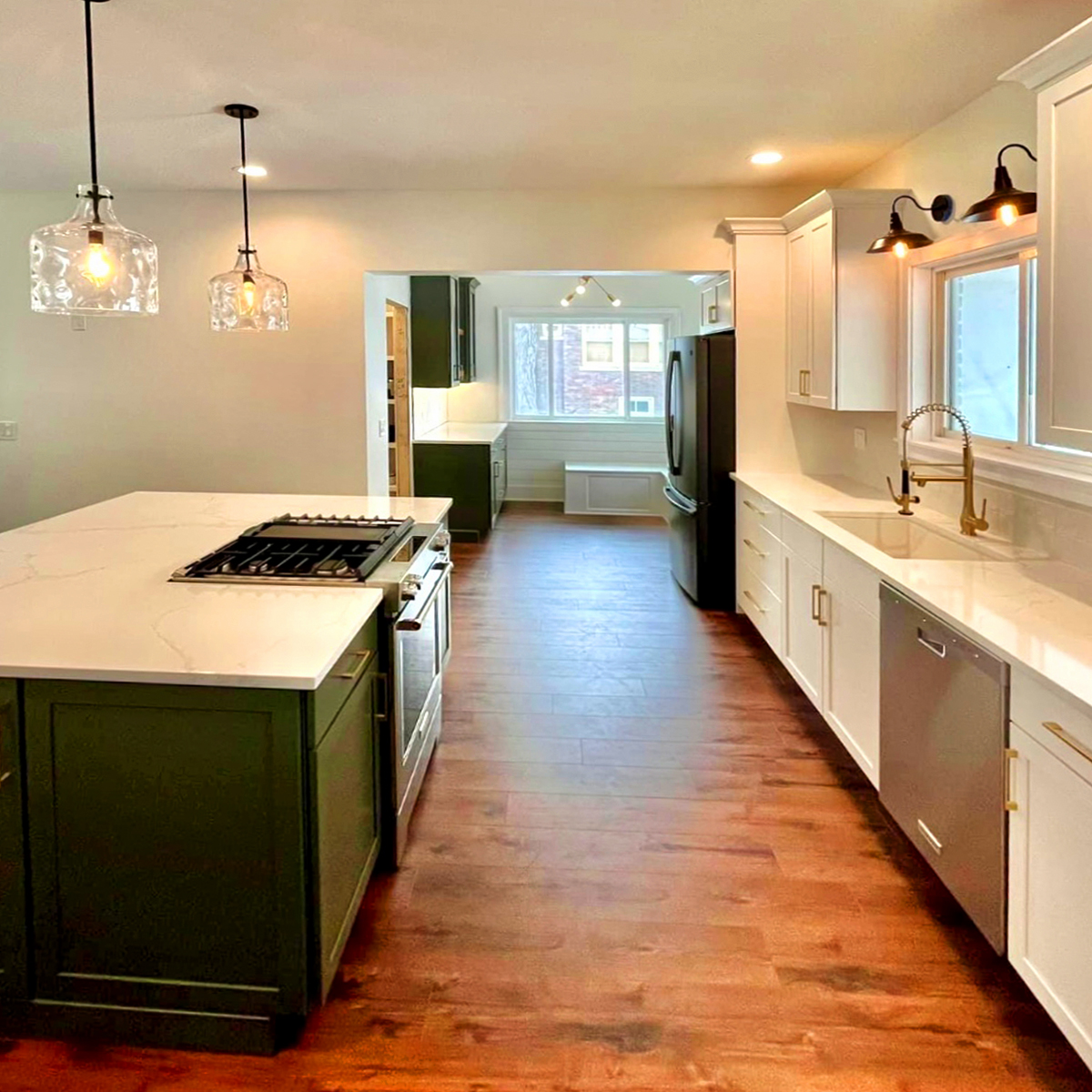Kitchen trends for 2024 support modern families needing convenience and versatility. Whether you’re updating an existing space or creating a design on a new construction home, consider the following options in your plans.
Open-Concept And Big Island
Homeowners want open-concept kitchens, meaning no wall separates the kitchen from an adjacent room. They also love the idea of a big island. Industry experts recommend 36 to 42 inches of walking space around your island for ideal flow. Kitchens serve as the home headquarters, where everyone gathers to socialize and meals are prepared and served. It’s time to make the space your favorite place in the home.
Green And Gold
There’s a shift from the all-white aesthetic to adding hues like green and blue, which are associated with colors found in nature and create a peaceful and refreshing atmosphere. Where silver dominated the kitchen accessory realm for many years, gold has risen in popularity for elevating the kitchen vibe and sophistication.
Layered Lighting
Because the kitchen has become a multi-purpose space in the home, the lighting selections should be layered for variety. Bright bulbs in practical fixtures are ideal for meal preparation and large gatherings, but you can still layer in other styles of more ambient light from pendants over the island and sconces near your window for those quieter moments in the day.
Maximum Practical Storage
Built-in and hidden drawers for pull-out appliances are now very common in kitchen remodels. Homeowners want as much functional storage as possible so countertop space is clear. Storage features such as charging drawers, pet food and feeding stations, and even a toe-kick storage component are highly desired.
Beverage Station
Coffee and beverage stations are trendy and lavish. But if you’re a fan of a homemade, French press cup of coffee or prefer a designated, fancy space to house your favorite varieties of tea, building a beverage station is just what you need to feel pampered daily.
Sustainability
Waste not, want not. Homeowners are opting for cabinetry materials that have minimal environmental impact. Choose recycled wood and other renewable resources for their durability and carbon-friendly footprint. Selecting energy-efficient appliances like refrigerators and dishwashers that minimize energy consumption and reduce utility bills is a commitment to responsible living.
Find more tips for homeowners.

